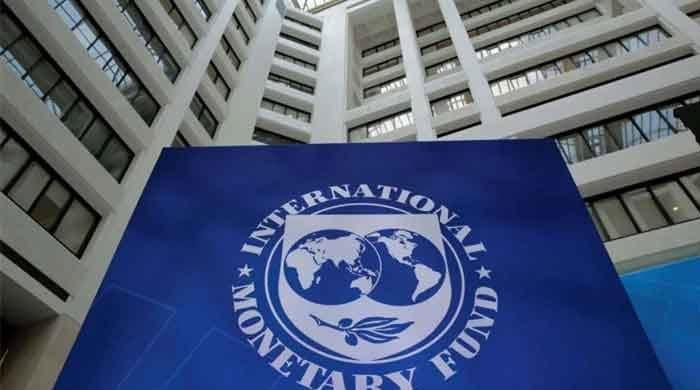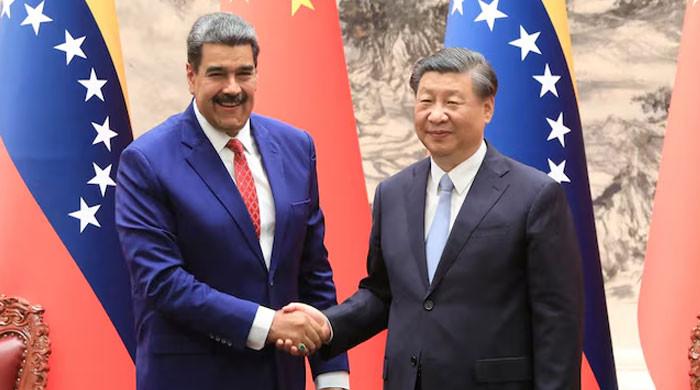Time for a fresh look at Pakistan's export opportunities
Pakistan cannot aim for digitalisation of economy and at same time impose punitive taxes on use of telecom and mobile phones and levy charges on digital payments
December 17, 2021

The government has also given priority to the tourism sector. Our neighboring countries – India, Sri Lanka, Nepal and the Maldives – earn a substantial amount of foreign exchange from highly organised tourism. Before Covid-19 India’s earnings were $30 billion, with Sri Lanka and Nepal in the range of $600-700 million annual inflows.
Pakistan has some of the most attractive tourist spots for meeting diversified interests. Eco tourists can enjoy Gilgit-Baltistan, Chitral, Swat and places in AJK. Ethnic and religious tourism would be able to draw the Buddhists and Sikhs from all over the world to places of their heritage and worship. Sea resorts, beaches, water sports lovers can find the pristine coastal areas of Sindh and Balochistan at exceptionally cheap prices. Historians of Mughal and British empires and archaeologists can explore the country at their leisure.
Of course, all this requires infrastructure facilities for transportation, local travel, accommodation, cleanliness and hygiene, safety and security, trained and courteous guides and service providers, visa and border facilitation, networks and linkages with international tourist operators. Travel advisories by foreign countries have to be relaxed and air travel by leading airlines of the world resumed. India allows package tours which extend to Nepal or Sri Lanka or multiple countries in the region. We may offer package tours by including Iran and Turkey or the Central Asian Republics. At present, we don’t have an integrated and well-coordinated tourism strategy in which the federal, provincial, local governments and private operators and service providers are able to work together and market Pakistan as a tourist destination.
To conclude, in quantitative terms, the private sector and policymakers should make joint efforts to reach $60 billion of exports of goods and services in the next five years, with the export-to-GDP ratio rising to 15 percent, 60 percent of imports financed by exports, and regaining 0.2 percent market share in the global market.
The combination of FTA II and SEZ s under CPEC have made the prospects of penetrating the world’s largest and fastest growing market quite promising. China’s exports of apparels to the US and EU are declining and Pakistan should be able to take advantage of this opening. These are by no means only aspirational goals but feasible falling within the cordon of attainability. The implication is that exports should grow at an annual average rate of 14 percent, which has been done in the past. Regional trade has been an essential instrument deployed by the Asean countries. Due to political difficulties, Saarc has been dormant for many years but at least ECO and CARIC can be reignited.
These aggregate targets should be divided between goods and services – the latter rising at a much faster speed than the goods, particularly IT and IT enabled services where the recent record augurs well for the future. Within the category of goods, we have to again subdivide into two sub-groups: the traditional, where we have comparative advantage, and sunrise where the global demand is on an upward moving escalator. Sectoral growth rates should be developed not by the government but by the respective sectoral exporters, trade analysts, potential new entrants taking into account the emerging trends in the world economy and global markets. These should then be discussed with government agencies and interwoven in a consensus-based overall strategy document, action plan with timelines and milestones, assignment of responsibilities.
What is expected from the government in the form of policies, incentives, institutional facilitation, removal of barriers to entry and exit should be clearly spelled out. For example, the results of the tariff rationalisation exercise by the NTC to reduce the average tariff rates and align them with those in the competitor countries should be announced along with its phasing over the next five years as it is unrealistic to expect that this can be achieved through shock therapy in one go.
The Ministry of Commerce, as the lead agency and acting as the coordinator, would take up all the proposals pertaining to policy issues to the appropriate forums such as the ECC, and federal and provincial cabinets for discussion and approval. The Standing Committees of the National Assembly and Senate should be briefed and their views incorporated. Finally, the Export Promotion Board under the chairmanship of the prime minister should monitor and review the progress every quarter and take remedial actions where required.
Coming to the responsibilities and obligations of the private sector, first and foremost is the mindset of our owners which needs a radical rethink. We may keep on lamenting the weaknesses and shortcomings of the government and blame it for all the ills and nobody would disagree or deny that characterisation but the key for export competitiveness of Pakistan lies not in the hands of the government but in the hands of the private-sector exporting firms – both existing and new entrants.
The attitude and treatment of the owners towards their workers need a fresh look. Instead of treating them as irritants or being confrontational, the Japanese have taught us that the floor shop personnel and salespersons are in fact key partners and collaborators. They know the business best and their views are listened to carefully and implemented. Remote control from head offices or cursory visits can never be an adequate substitute for productivity enhancement originating from the bottom and permeating upwards.
Professionalisation of the management cadre and deployment of management consultancy and adoption of international benchmarks and best practices are other enablers that need to be reconsidered. Attracting foreign multinationals as partners, giving up the noise for limitless high protection without any time restriction or incurring new industry learning costs as well as participation in global value chains would also boost export competitiveness. Export of services requires more careful and detailed work that needs to begin sooner than later.
The achievements of the targets spelled out above would, by no means, follow a straight and smooth linear path and there would be bumps and jolts along the path but the end result is very much achievable .Things would not work out in the neat and elegant way outlined above but in today’s complex and dynamic world no action plan ought to be cast in stone but remain flexible and updated in light of external and internal developments. Extraordinary shocks such as Covid-19 would throw all the plans prepared, say in 2018, out of the window and require a retrofit. However, there are some critical success factors for successful outcomes such as: consistency, coherence, coordination and predictability. We have learnt from past experiences of non-achievement of the objectives of previous strategic trade policies and frameworks that investors and businesses value these critical factors in making their decisions.
Some apparent inconsistencies and contradictory policies and actions should be removed as quickly as possible. In a global value chain driven trade environment, high levels of tariffs are inimical to promotion of exports. Low average tariff rates (comparable to our competing nations) with fewer slabs, simplified computerised and automated procedures without arbitrary and discretionary powers enjoyed by tax collectors would help the strategy succeed.
We cannot aim at the digitalisation of the economy and expansion of IT and IT related services exports and at the same time impose punitive taxes on usage of telecom and mobile phones and levy charges on digital payments while cash payments are free to the users but costly to the issuer and distributor of the currency. Targets and action plans may change but these factors of consistency, coherence, coordination and predictability should be retained.
The writer is the author of 'Governing the ungovernable'.
Originally published in The News











